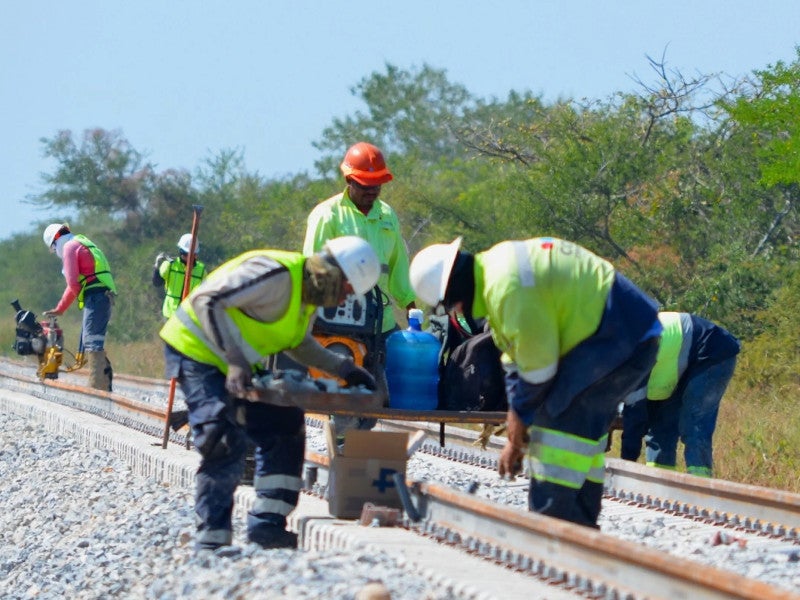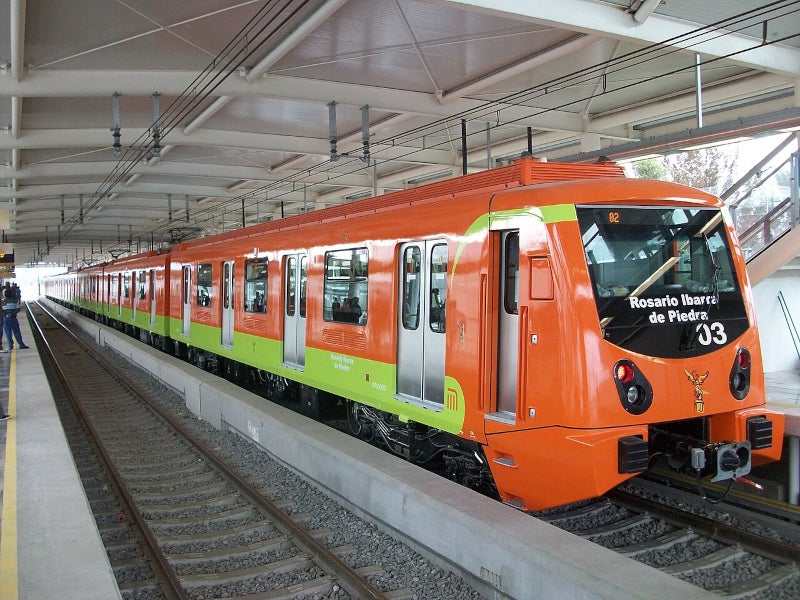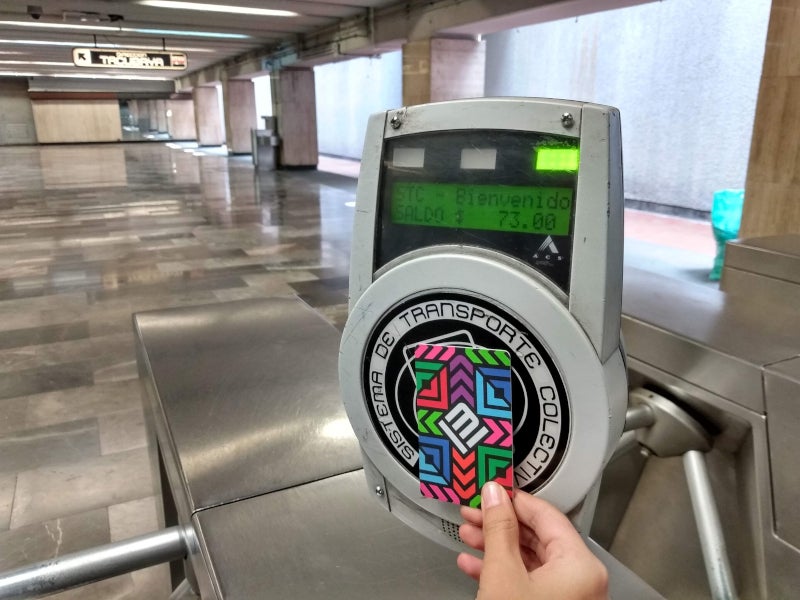The Mexico City Metro is a rapid transit system serving the metropolitan area in Mexico City. It is the world’s eighth-busiest metro and North America’s second-largest rapid transit system. It serves 16 boroughs and 41 neighbourhood municipalities of Greater Mexico City.
The transit system is operated by the public entity Sistema de Transporte Colectivo (STC), also known as Collective Transport System. It stretches approximately 225km and includes 12 lines with 195 intermediate stations.
The average daily ridership of the metro is 4.2 million passengers.
Development stages of the rapid transit system
The metro system was built in seven phases. The initial phase, built from 1967 to 1972, established Lines 1, 2, and 3. The second phase, developed between 1977 and 1982, saw the creation of Lines 4 and 5, plus an extension to Line 3.
Between 1983 and 1985, the third phase introduced Lines 6 and 7 and expanded Lines 1, 2, and 3.
Despite a disruptive earthquake in 1985, construction resumed swiftly, with the fourth phase (1986-1987) adding Line 9 and extending Lines 6 and 7. The fifth phase (1988-1994) brought Line A and Line 8 while the sixth phase (1993-2000) focused on Line B.
The final phase began in 2008, culminating in Line 12’s launch in October 2012. The entire project was constructed at a total cost of $1.8bn, with the federal government contributing $500m and local funds providing $420m.
Lines of Mexico City’s Metro
Line 1 stretches 18.83km from Observatory to Pantitlan. It was opened in 1969, extended thrice and currently has 20 stations, of which 19 are underground and one on the surface. It runs from east to west of the city.
Line 1 was later modernised by CRRC, a Chinese state-owned rolling stock manufacturer. The renovated line started operations in October 2023. It was upgraded and renovated with new rolling stock, communication signal systems, new lines, and electromechanical systems. It has a service period of up to 19 years.
Line 2, referred to as Blue line, was opened in 1970 and extends from north-west to south of the city from Cuatro Caminos to Tasquena. It was extended twice and stretches 23km with 24 stations, including five transfer stations, 17 transit stations and two terminals.
Denoted by olive green, Line 3 stretches 23km with 21 stations including six transfer stations, 13 transit stations and two terminals. It runs from north to south of the city between the terminals Green Indians and University. It was opened in 1970 and is mostly underground.
Line 4, which extends from north to the south-west corner of the city, starts at Martin Carrera and terminates at Santa Anita. It was opened in 1981 and is mostly elevated. The line stretches 10km with ten stations, including six transfer stations and four transit stations. It is represented by cyan colour.
The metro’s Line 5 is 15km extending from north to east of the city. It was extended twice and includes 13 intermediate stations. The line starts at Politecnico and terminates at Pantitlan. Part of the line is underground and the remaining runs on the surface. The line is represented by yellow colour.
Line 6 is 13km and represented by red. It was first opened in 1983 and was extended once. It starts at The Rosary and terminates at Martin Carrera. It currently has 11 stations and is completely underground, except for one station.
Represented by orange, Line 7 is an 18km-long metro line stretching between El Rosario and Barranca del Muerto. The line was opened in 1984 and extended thrice. It currently includes 14 stations. It also runs underground, excluding one station on the surface.
Line 8, represented by the colour green, starts at Garibaldi and extends 20km to terminate at Constitution. It has 19 stations, of which 14 are underground and five are above the surface.
First opened in 1987, Line 9 stretches 15km and includes 12 stations. It is represented by dark brown. It starts at Tacubaya and terminates at Pantitlan.
Line A, also called Line 10, was opened in 1991 and is represented by purple colour. It has a total track length of 17km. It starts at Pantitlan and passes through ten intermediate stations to terminate at La Paz. It has elevated, surface and underground stretches.
Line B, also called Line 11, stretches 23km starting at Azteca City and passing through 21 intermediate stations to terminate at Buenavista. The line was first opened in 1999 and is represented by grey and green colours.
Represented by gold colour, Line 12 stretches 25km between Mixcoac and Tlahuac and has 20 intermediate stations.
Rolling stock on Sistema de Transporte Colectivo
Line 1 operates MP-68 (1968 French-built) and NE-92 (1992 Spanish-built) rolling stock. NM-02 (2004 Mexican) rolling stock is used on Line 2.
Line 3 uses NM-79 (1979 Mexican-built) rolling stock, while Line 4 uses six-wagon CAF Spanish rolling stock.
Line 5 uses NC-82 (1982 Canadian) rolling stock and Line 6 uses six-wagon trains introduced by STC.
Line 7 operates NM73 and NM 83 model rolling stock and MP68 trains. Line 8 uses MP82 rolling stock, which was manufactured during 1982-84 in France.
Line 9 operates GPS and intelligent control system renovated MP68 rolling stock. Line A operates FM86 (1986 Mexican), FM95A (1998-99 Mexican) and FE07 (2009 Spanish) rolling stock.
Line B operates the Bombardier-Concarril refurbished intelligent control system and GPS-equipped MP68 rolling stock. The rolling stock was previously operated on Line 1.
Line 12 operates FE-10 rolling stock manufactured by CAF in 2011. CAF was awarded a contract to supply 30 seven-car railway sets in December 2009.
Further, an articulated light rail train developed by CRRC Zhuzhou Locomotive was imported to Mexico to run on three lines of the light rail system in the Mexican city of Monterrey.
Light rail train details
The train is designed to travel at 80km/h and has a length of 29.5m and a width of 2.69m, with a capacity of 355 passengers.
With an innovative modular design, the train can adapt to various formations with flexibility. Additionally, it features state-of-the-art systems and facilities that are barrier-free, ensuring a secure and comfortable travel experience for passengers.
Moreover, to enhance operational safety on intricate routes, the train incorporates a triple ‘safety net’ comprising the electric braking system, air braking system, and magnetic rail braking system, offering maximum braking safety under challenging conditions.
Contractors involved
COMSA, a Spanish multinational group specialising in infrastructure construction, industrial engineering, and services, was awarded a contract for the rehabilitation of tracks and systems of Metro Line 1 in November 2021. The value of the contract is approximately €80m ($90.4m).
The tasks assigned to COMSA were integral components of a long-term services agreement established between the public entity STC and CRRC Zhuzhou Locomotive.
The agreement encompassed the extensive upgrading of trains, along with the enhancement of the control system and tracks for Line 1 of the Mexico City Metro.
A consortium of ICA and Carso was contracted to carry out the civil works on Line 12 of the metro. Alstom was awarded a turnkey contract to supply its Urbalis CBTC-based ATO control systems and overhead electrification systems for the line.
CAF, a global rail solutions provider, also delivered ten pneumatic trolley-trains for Line 1 of the Mexico City Metro.
United Nations Office for Project Services provided technical support to upgrade Line 1 of the Mexico City rapid transit system.






